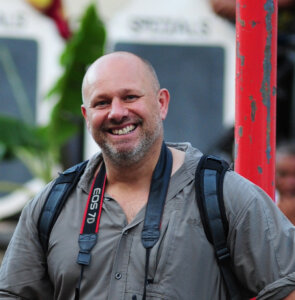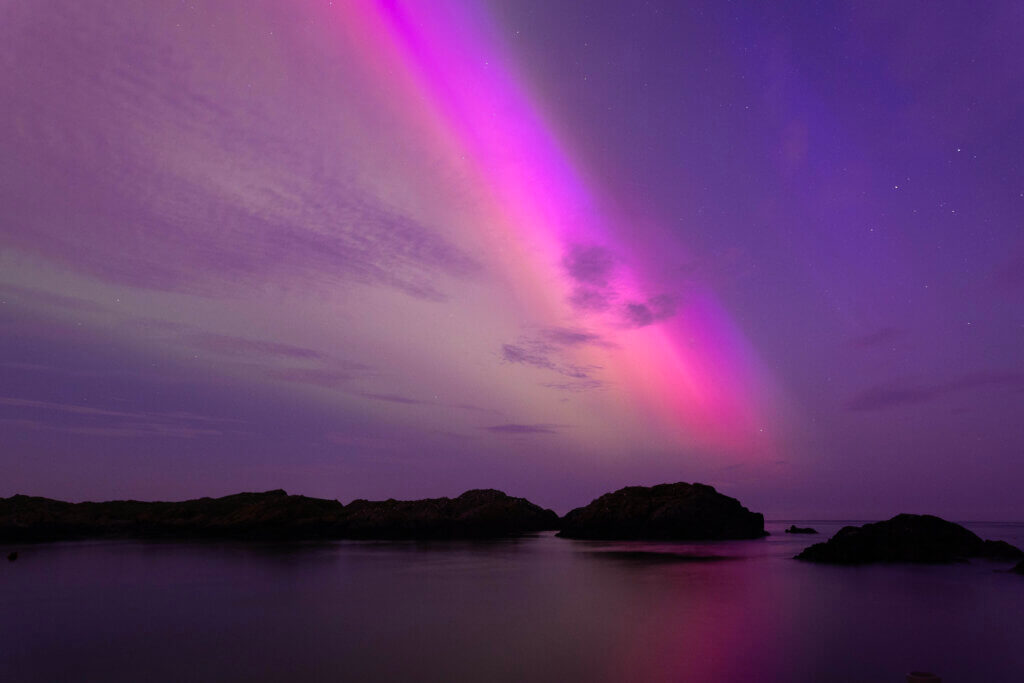 David Higgins works in conservation. He has lived and worked in the Falkland Islands, St Helena Island, India, The Skerries, the Yorkshire Dales, the North Pennines and now the Wiltshire Wildlife Trust. He loves islands especially seabird colonies, where he enjoys his main passion of wildlife photography.
David Higgins works in conservation. He has lived and worked in the Falkland Islands, St Helena Island, India, The Skerries, the Yorkshire Dales, the North Pennines and now the Wiltshire Wildlife Trust. He loves islands especially seabird colonies, where he enjoys his main passion of wildlife photography.
My colleague, Filip, takes a full-frontal crap attack. Tern faeces splatter his sunglasses and run down his face. A few expletives, and wet wipes, later and we continue the survey in the UK’s largest Arctic Tern colony. Filip and I are this year’s wardens living on The Skerries, off Anglesey. It’s a dream job and sometimes a nightmare. Arctic and Common Terns are exceptionally aggressive. Even wearing a protective hat my head is peppered with blood spots from relentless attacks. Imagine having a dozen people jabbing darts in your scalp and you wouldn’t be far from our reality. Living on an island in a Grade II listed lighthouse isn’t always as romantic as you’d imagine. Our waterproofs look like plasterer’s overalls.

I’ve just moved from the Falkland Islands. I loved my three and half years there and owe the islands, and people, a huge debt of gratitude. If my contract had been more certain I wouldn’t have looked for another job, but The Skerries aren’t a bad second choice. These tiny islands and islets are a seabird haven of Terns, Puffins, Gulls, Shags and Razorbills and to make my transition less traumatic I watched the Northern Lights for the first time as they coloured the night sky over The Irish Sea, but I’m paid to look after the birds not look at nocturnal phenomena. These islands are important as they hold an incredible Arctic Tern colony sitting at the southern fringe of their breeding territory. Usually they prefer higher latitudes; in the Arctic for breeding then leaving northern winters behind to ‘overwinter’ in the Antarctic. The last time I saw one was at Yorke Bay in the Falklands plumaged in winter feathers and feeding among a mass of summer plumaged South American Terns.


Arctic Terns are stunning examples of evolution. A delicate fork tailed, slender and graceful with a long-distance athlete’s physique. Their scientific name, Sterna paradisaea, means paradise tern. In Wales they’re called Sea Swallows, in Scotland they’re Tarrock – in deference to their call. It’s easy to be fooled by appearance but these subtle looking birds are the hardiest characters of the oceans. They have the longest migration of any animal and see more daylight than any other species as they aim to exist in an endless summer. It isn’t plain flying; they take huge hundred-mile meandering sweeps over the ocean to avoid storms and catch the winds.
When focused on migration they can fly at thirty miles an hour at over three kilometres altitude for sustained periods. Other times they’ll stop for weeks to tank up on food as they try to harvest the thirty thousand kilojoules they need for this multi thousand-mile journey. For a bird that weighs ounces the amount of energy they expend is astounding. Each two-way migration can be as much as sixty thousand miles. Over an average thirteen-year lifespan that can be as much as three round trips to the moon. The oldest known Arctic Tern lived thirty-four years of endless travel punctuated by an annual breeding season when they navigate to the same spot in an isolated colony like ours on The Skerries. No GPS or satnav, they do it by processing geography, the sun, moon and stars, and the earth’s magnetic fields; all number-crunched in a tiny pea sized super-computer brain.
The pure psychotic aggression they display towards any threat entering the colony is beyond what an animal their size should possess. I can testify to it, but I’m really no challenge. In the Arctic they fend off Polar Bears by targeting their black noses and eyes with sharp bill jabs and crap bombs. Fending off predators and chasing the sun isn’t an easy life and still we do our best to make it more difficult. Habitat loss, diseases such as bird flu, non-native species like rats and cats, and fish stock crashes all stack the deck against them but still they prevail, often through sheer stubbornness and fortitude.

The Skerries remind me of the Falkland Islands every day; whenever I glimpse a Great Black Backed Gull I automatically think it’s an albatross. When I see the shadow of a bird cast in front of me I think there’s a Johnny Rook about. Health and safety rules are different here though. I’m not allowed to stand on the roof even if there’s a safety barrier, but I can clamber over wet rocks and up cliff faces, making the rules inconsistent. My time in the Falklands got me too used to wildlife encounters that you struggle to find in the UK. Magellanic and Blackish Oystercatchers feel semi-tame but here I’m lucky to get within twenty metres of their European cousins.

Today’s a sad day for me. Two Falklands friends, Marilou and Katy, were due to visit on the ten-day resupply cycle, but the weather made it impossible. On my personalised Beaufort Scale it’s blowing a proper Falklands. Gusty and aggressive winds drive the sea into a frenzy. Waves crash over rocks and islets; sea foam fills the gulches. Birds are flying backwards till they struggle to correct the natural order of things. At the back of the lighthouse an Arctic Tern stands on the wall chattering its pre-attack chant. A gust of wind whips round the curve of the lighthouse and unsteadies the bird making it fall backwards. In a few unnatural twists and wing beats it rights itself and heads for my face. ‘It wasn’t me,’ I tell it. My indignant reasoning makes no difference, so I run away. In the face of a tern attack cowardice is the correct response. Down the next path I suffer sortie after sortie of angry birds. Slowing down for the steps that lead over the wall where two more birds wallop me. On the other side the courtyard birds rise and drop several dump bombs. It doesn’t rain here it pours and on The Skerries it pours copious amounts of faeces.
[registration_form]
Brilliant; hugely entertaining blog. Thank you,
thanks Francis
Have just been reading about puffins on the Shiants (Sea Room – Adam Nicholson). These arctic terns on the Skerries have a different approach to life! What a wonderfully entertaining and informative account, and lovely photos. That’s an astonishing oystercatcher. Thanks indeed.
Thanks Tim, I was incredibly lucky to get the chance to work on The Skerries. The Shiants have been on my must visit list for a long while too. Would you recommend Sea Room?
Cheers,
Dave.
Really enjoyed this Dave. As others have said, entertaining and informative. What great stories you have to tell. I look forward to reading more of them.
Thanks Amanda – your feedback is really motivating and very appreciated. Hope youre well.